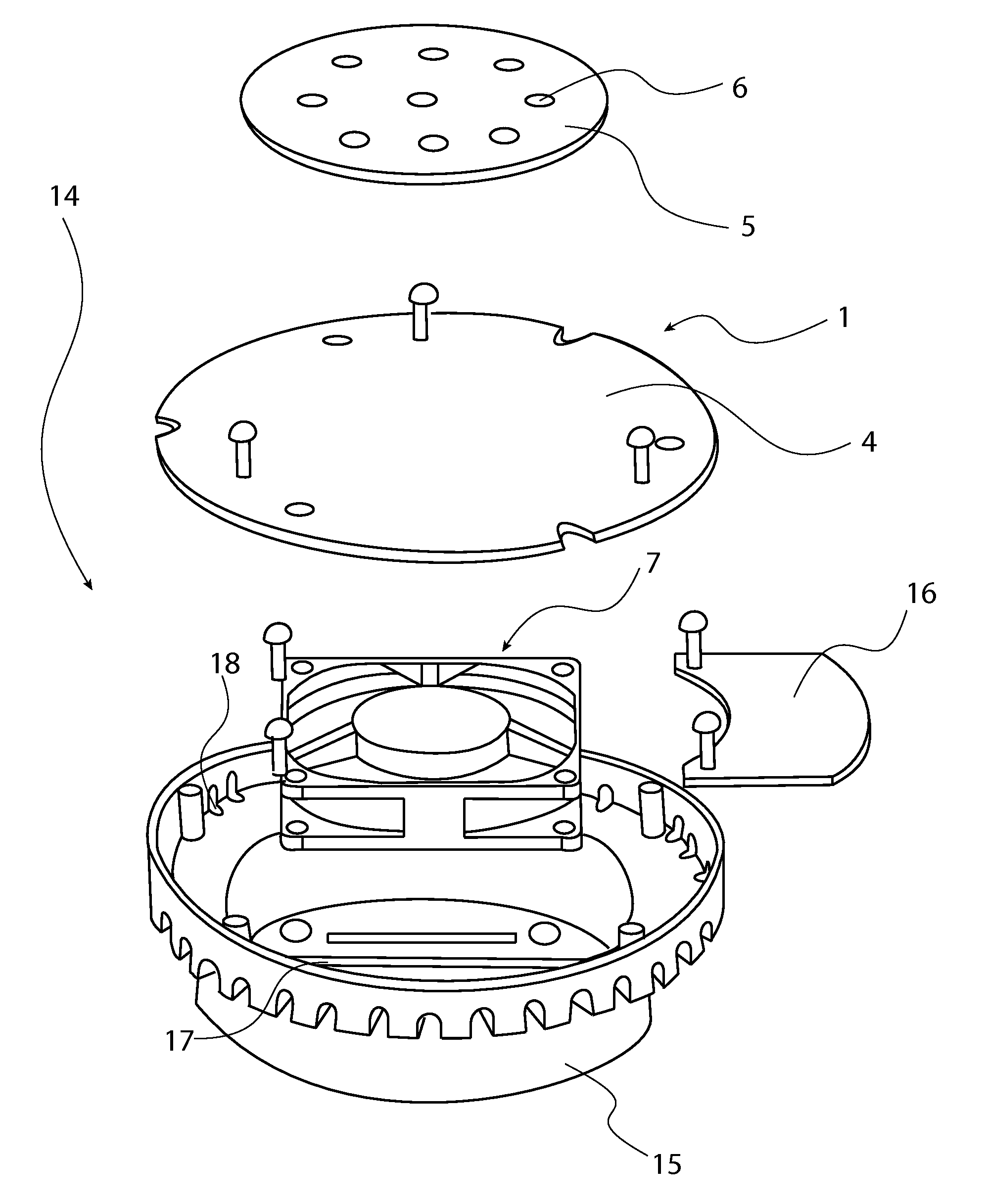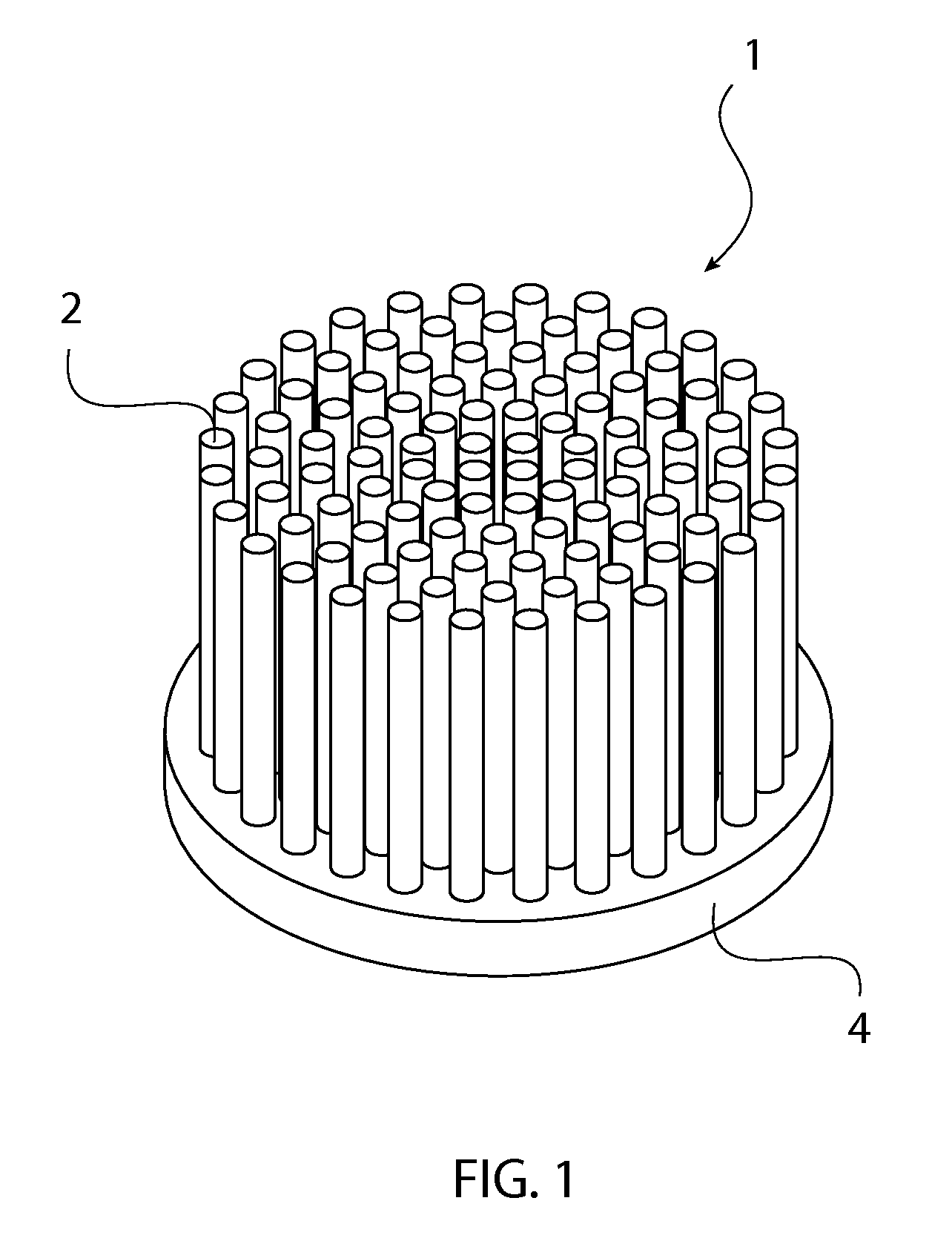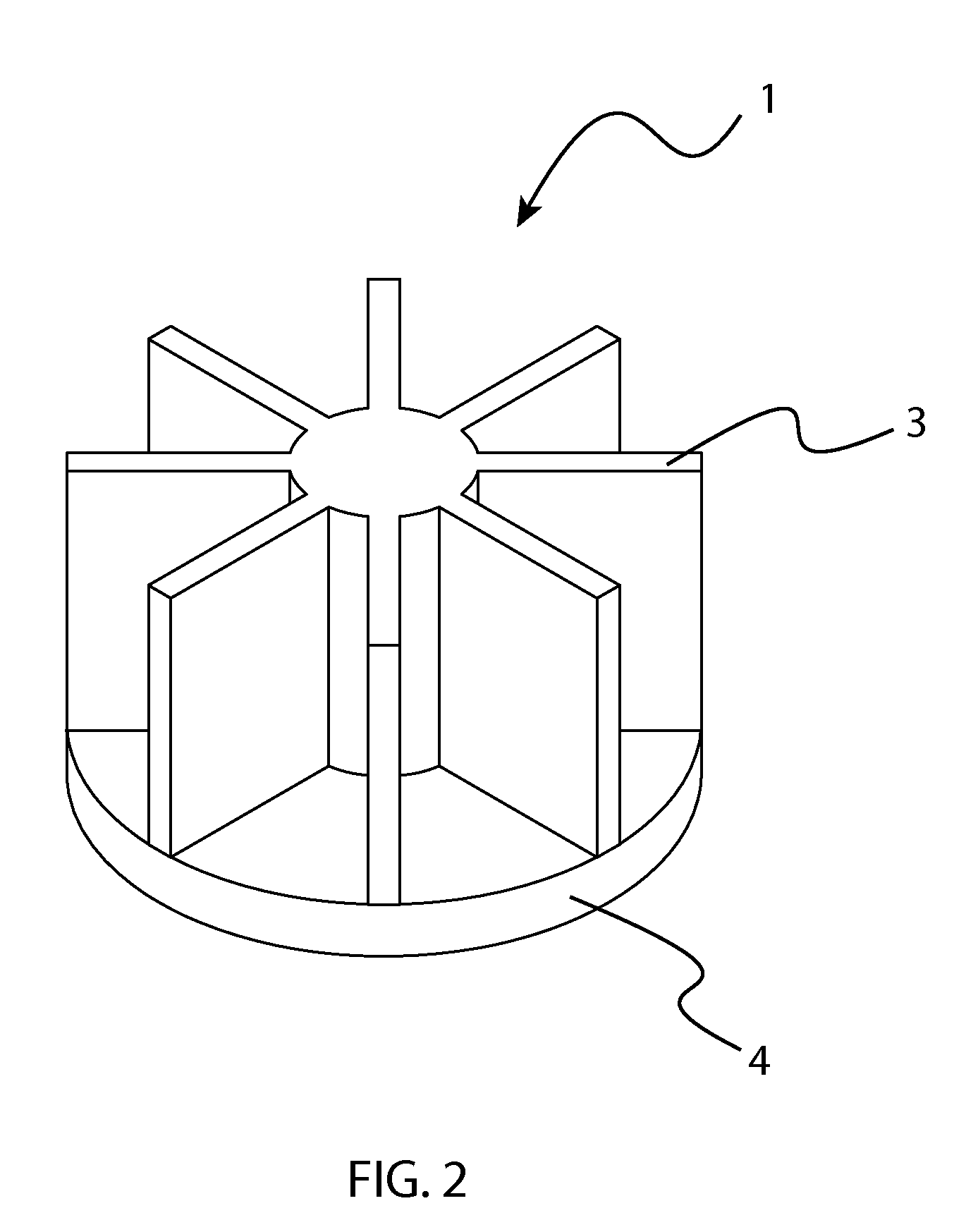Cooling Methodology for High Brightness Light Emitting Diodes
a technology of light-emitting diodes and cooling methods, which is applied in the direction of electrical apparatus contruction details, light-emitting and heating apparatuses, semiconductor devices for light sources, etc., can solve the problems of substantial surface turbulence and substantially greater cooling, and achieve the effect of large size, cost and efficiency benefits
- Summary
- Abstract
- Description
- Claims
- Application Information
AI Technical Summary
Benefits of technology
Problems solved by technology
Method used
Image
Examples
Embodiment Construction
[0038]All illustrations of the drawings are for the purpose of describing selected versions of the present invention and are not intended to limit the scope of the present invention as a cooling apparatus for high brightness LEDs. Referring to FIG. 15, the present invention comprises mainly of a cooling enclosure 14, a 1, a cooling fan 7, a LED substrate 5, and a plurality of LEDs 6.
[0039]Referring to FIG. 1, FIG. 2, FIG. 14, the heat sink 1 can be fabricated by forging or die casting. The heat sink 1 consists of a mounting surface 4 from which there are a plurality of protrusions 2, 3 from its surface. One type of protrusion is a pin protrusion 2, which is a thin solid cylinder with a structure effective for heat transfer. In other designs, the protrusions could take the form of a plurality of fin protrusions 3. In certain instances, fin protrusions 3 can result in more total protrusion surface area, reduced air flow resistance, or both, thereby resulting in more cooling effectiven...
PUM
 Login to View More
Login to View More Abstract
Description
Claims
Application Information
 Login to View More
Login to View More - R&D
- Intellectual Property
- Life Sciences
- Materials
- Tech Scout
- Unparalleled Data Quality
- Higher Quality Content
- 60% Fewer Hallucinations
Browse by: Latest US Patents, China's latest patents, Technical Efficacy Thesaurus, Application Domain, Technology Topic, Popular Technical Reports.
© 2025 PatSnap. All rights reserved.Legal|Privacy policy|Modern Slavery Act Transparency Statement|Sitemap|About US| Contact US: help@patsnap.com



